Have you started working on telling time to the hour and half hour in your first grade classroom? Teaching first graders to tell time is no easy task! In this blog post, I’ll share my favorite tips and tricks to help your students master telling time.
Want your 1st Grade Telling Time Unit planned for you? Find all of the time lessons, activities, anchor charts, worksheets and more here!

Tip 1: Teach all about clocks!
In order to read clocks, first we need to understand all about the types of clocks and the parts of a clock!
In our first telling time mini lesson, we learn that clocks are a tool that are used to measure time. We practice identifying analog and digital clocks.
We also learn the parts of the clock. We practice building a clock together on our smart board.
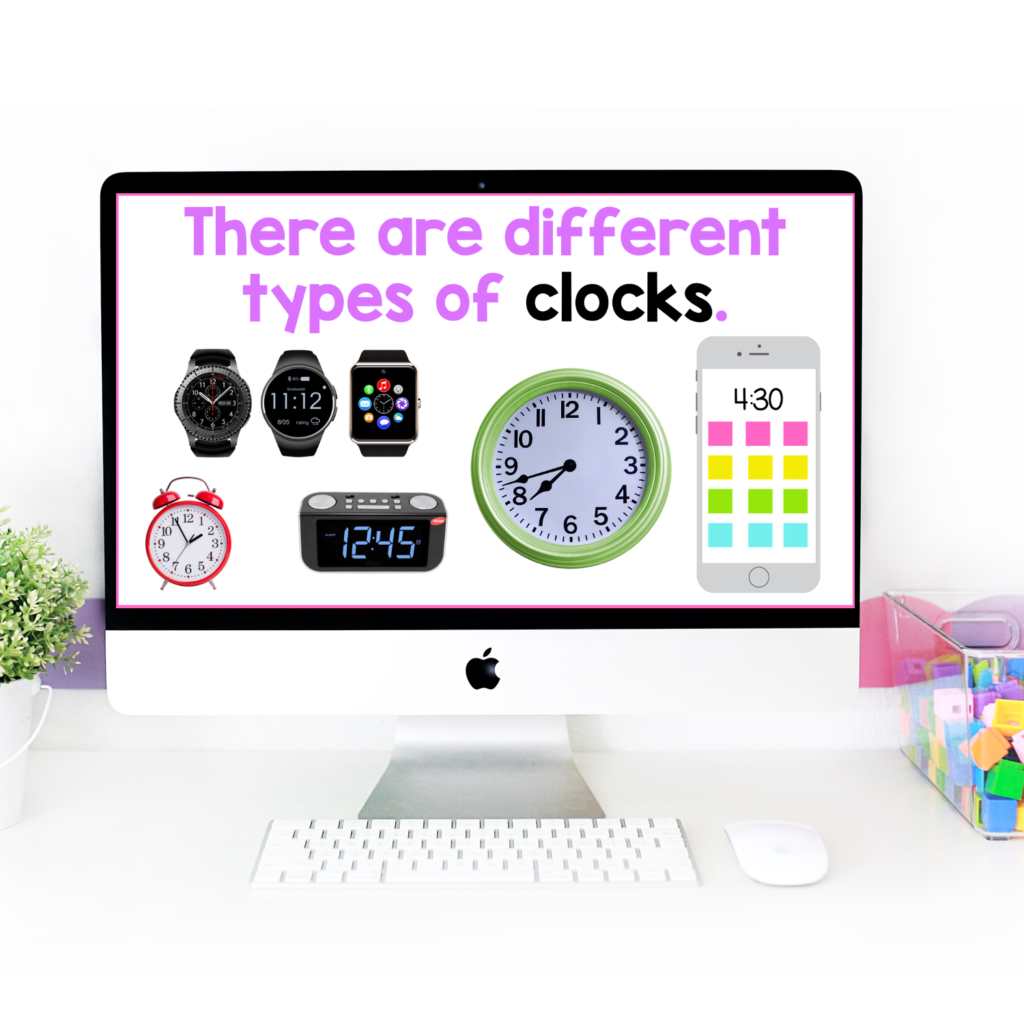
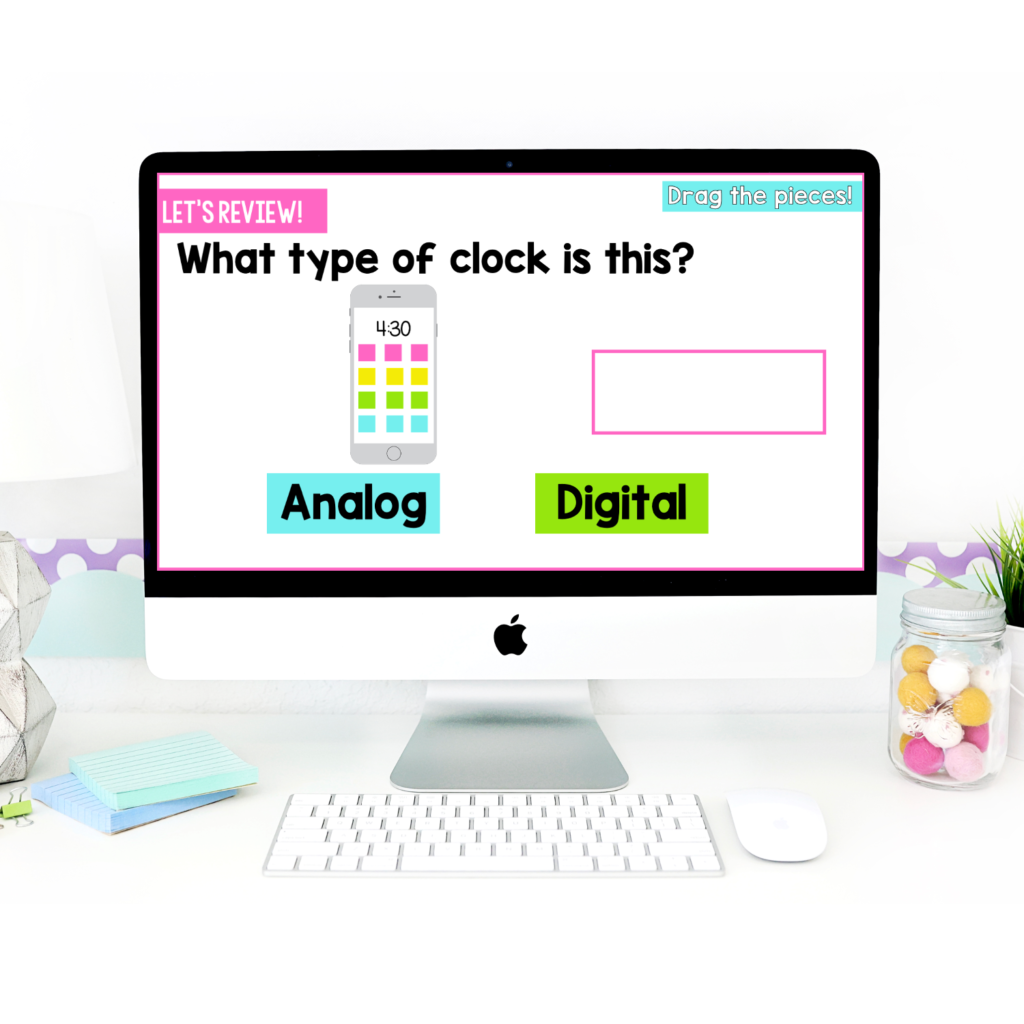
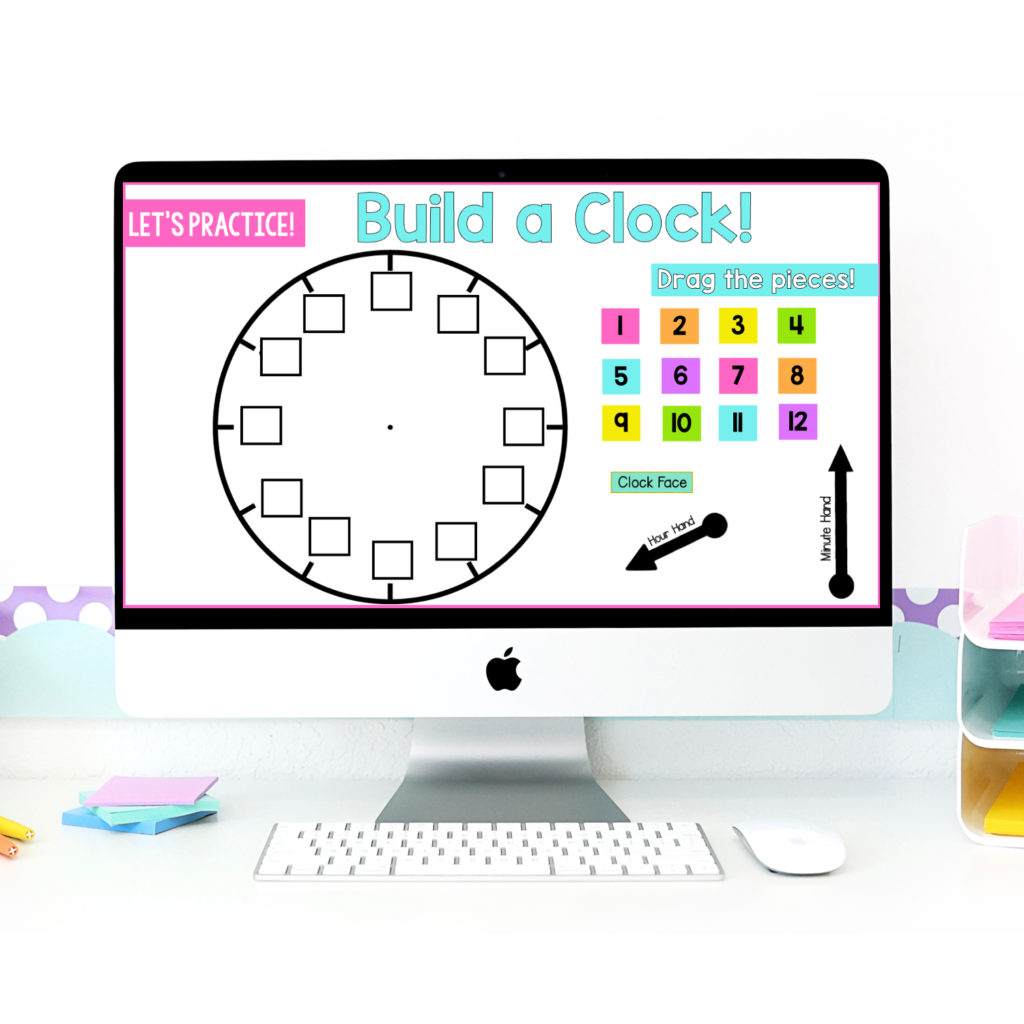
During small group time, students get to build their own analog clocks.

Tip 2: Interactive Telling Time Mini Lessons
My favorite way to teach any math unit is with interactive slides! I love having the large visuals for all students to see. Our whole group time is quick – usually about 15 minutes before we start our guided math rotations. You can read more about our Guided Math block here!

During our mini lesson we always:
- Name our learning objective: I can tell time to the hour and half hour. We usually read this together. I also have visual of the items students will need for our mini lesson. This allows them to have their supplies out and ready to go!
- Review important vocabulary for our unit

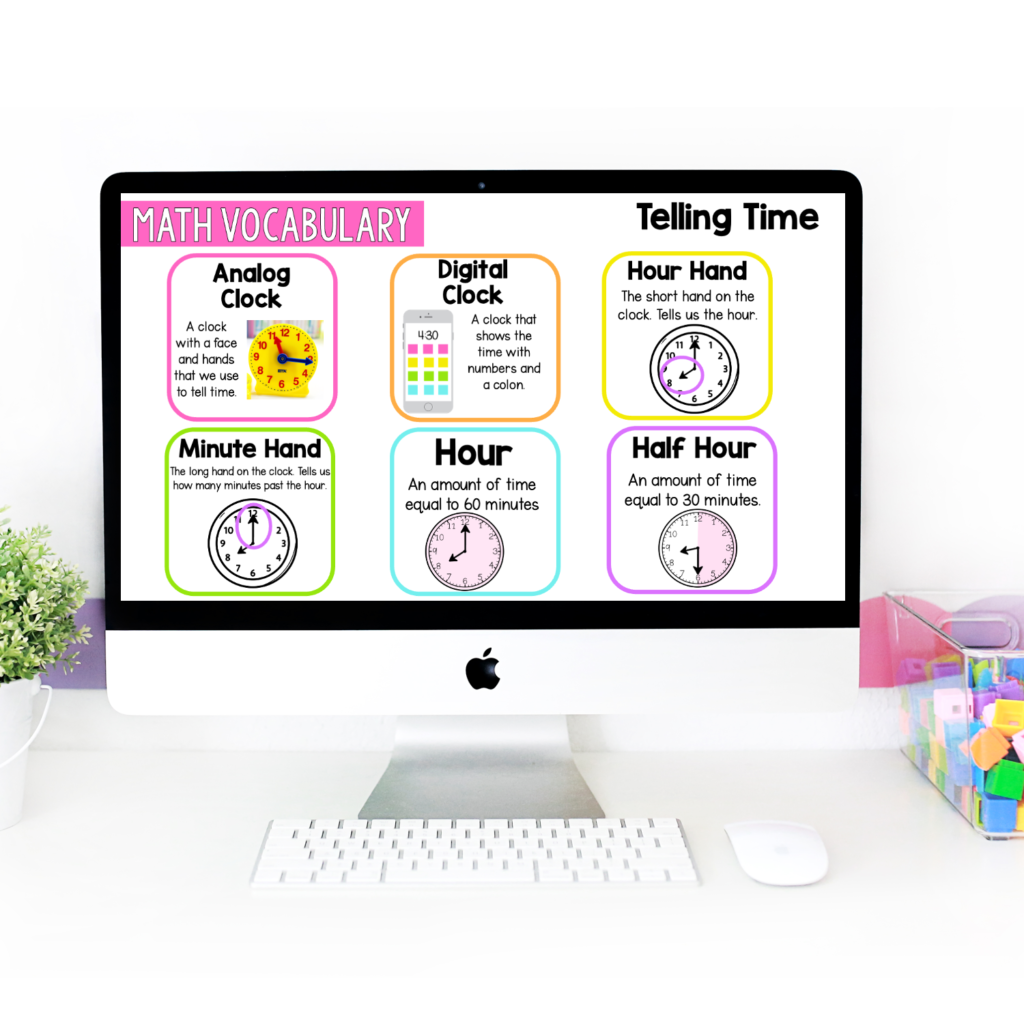
- Direct instruction and modeling of the skill
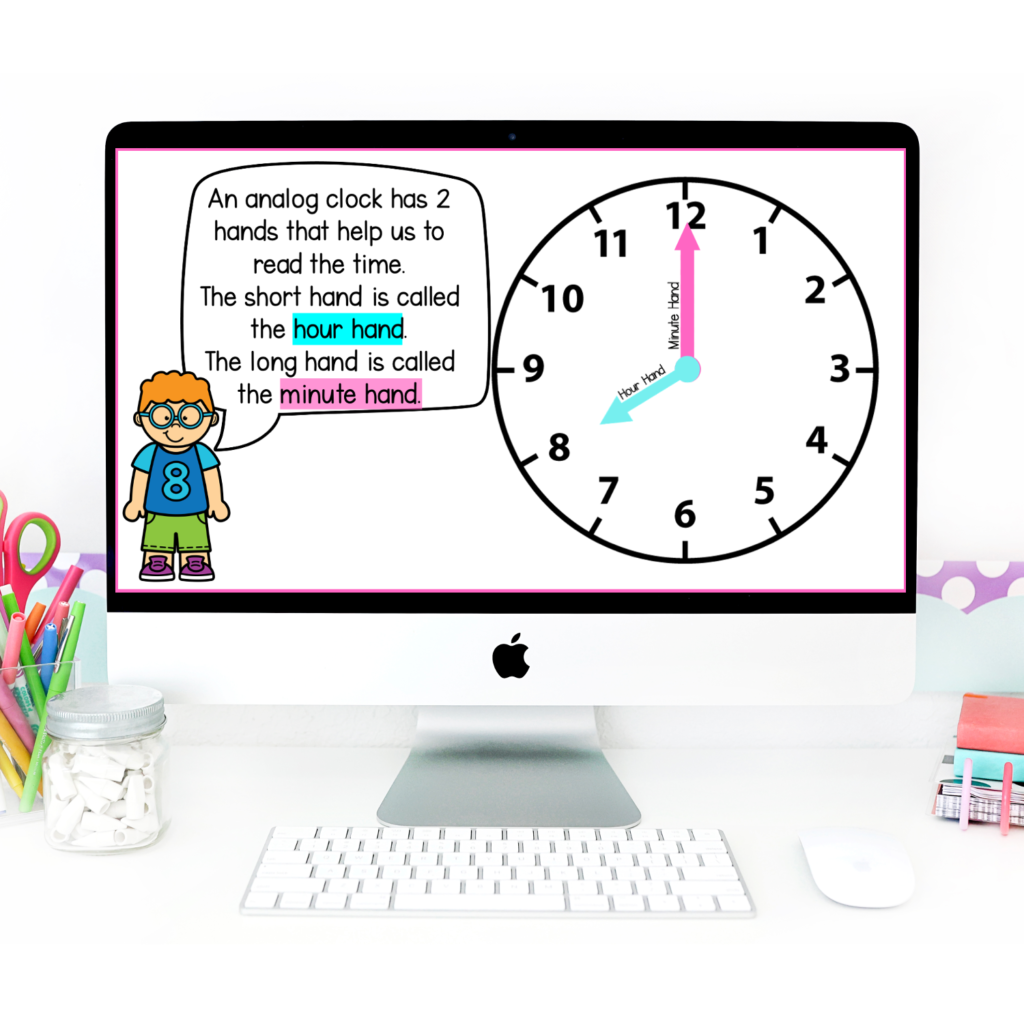
- Quick practice of the skill – I like to have students bring dry erase boards and markers so that all students can participate. They also sit next to their math partner so that they can turn and talk to share their ideas during the lesson.

Tip 3: Teach About Hour Rooms (Telling Time Freebie!)
This method has been a game changer for teaching my first graders to tell time. It’s always so tricky for students to know what the hour is when the hour hand is between 2 numbers.
I like to teach students that every number on the clock has a “room” The space after the number is its room. When the hour hand is pointing in that room, that’s the hour!
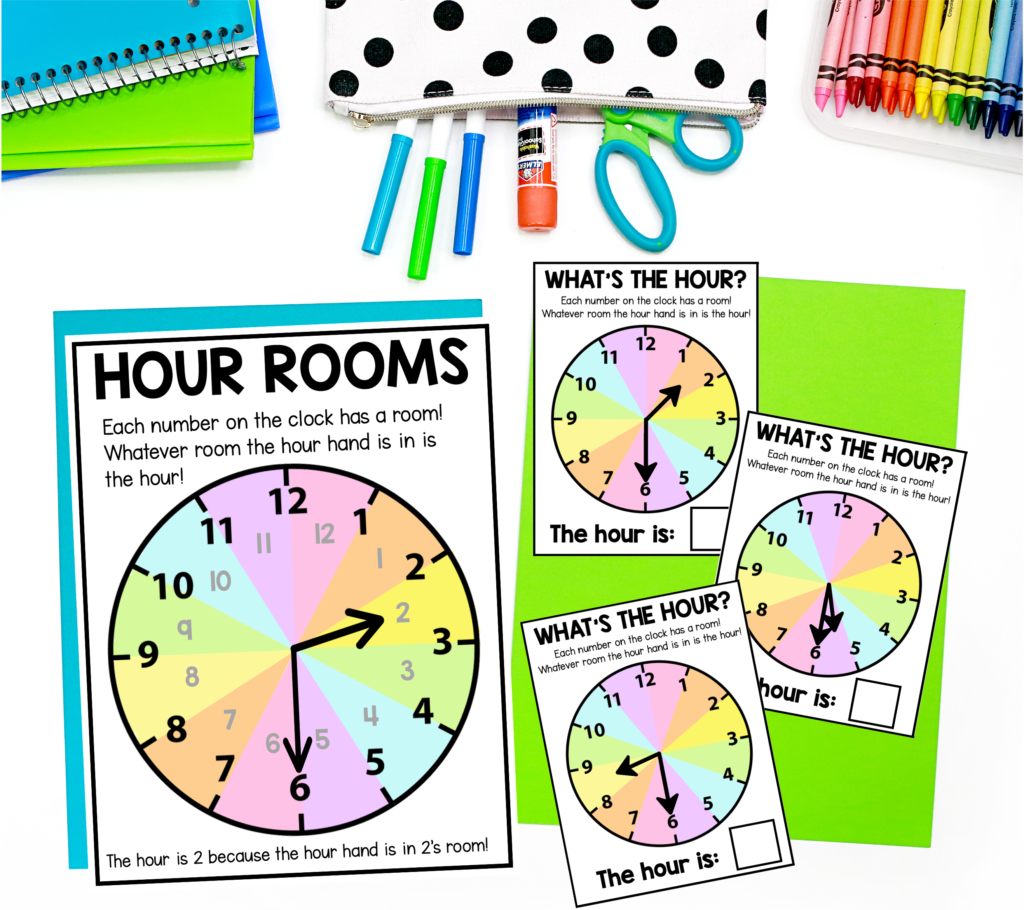
We have a color-coded clock to help students visualize the rooms.
We also do some practice activities to identify the hour.

Tip 4: Hands-on Small Group Practice for Telling Time to the Hour and Half Hour
During our guided math rotations, students have hands-on practice with telling time to the hour and half hour!
At the teacher table students practice with small mini-Clocks. I love these because students are able to see how as the minute hand moves around the clock, the hour hand moves from one hand to the next.
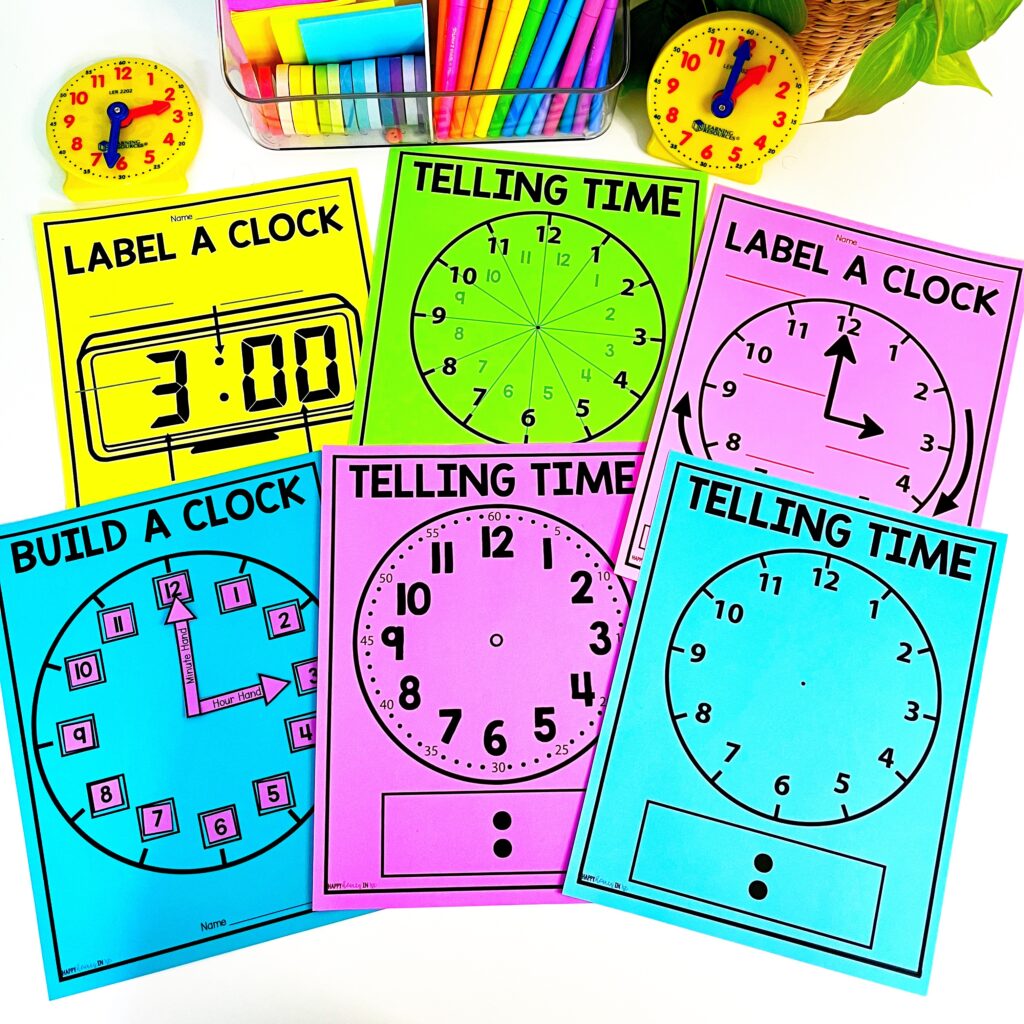
After using the Judy Clocks, I like to use Telling Time Math Mats to practice. Math Mats are my favorite small group activity!
I love using math mats during my Guided Math Small Group Instruction! To prep, I simply print enough copies for each student in the group and slide into a dry erase pocket!
We use the mats throughout the unit to practice writing digital times and drawing hands on the analog clock.
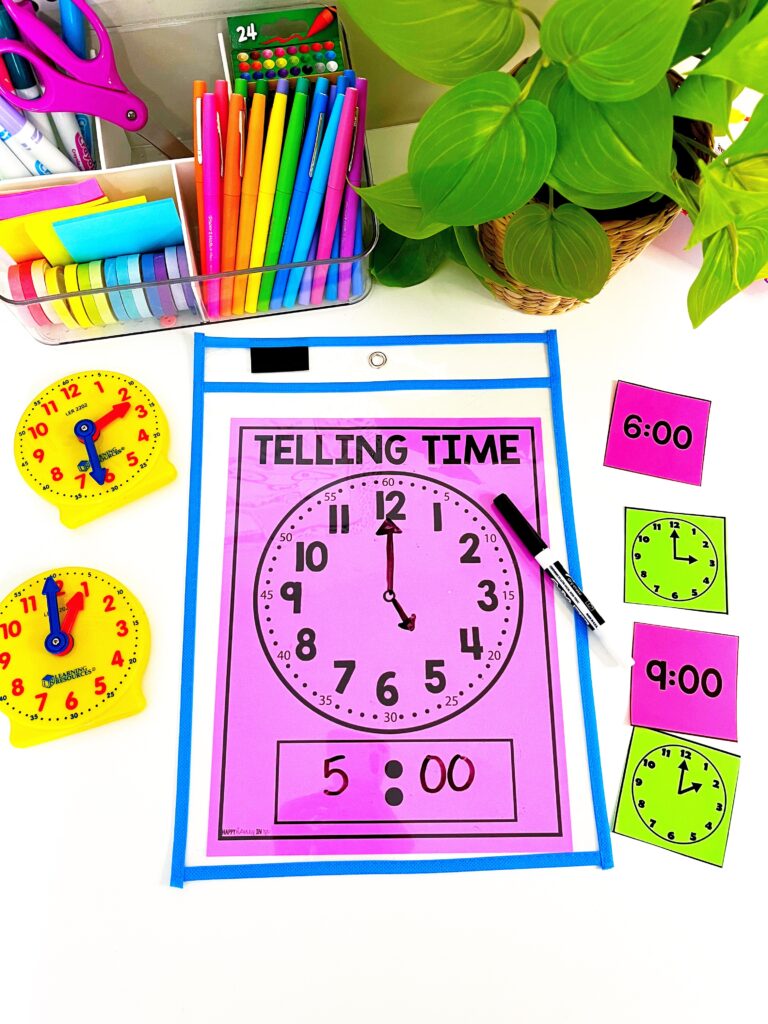
I like to use play-doh as clock hands! Students love making their hour and minute hand and moving them around the clock to show different times.
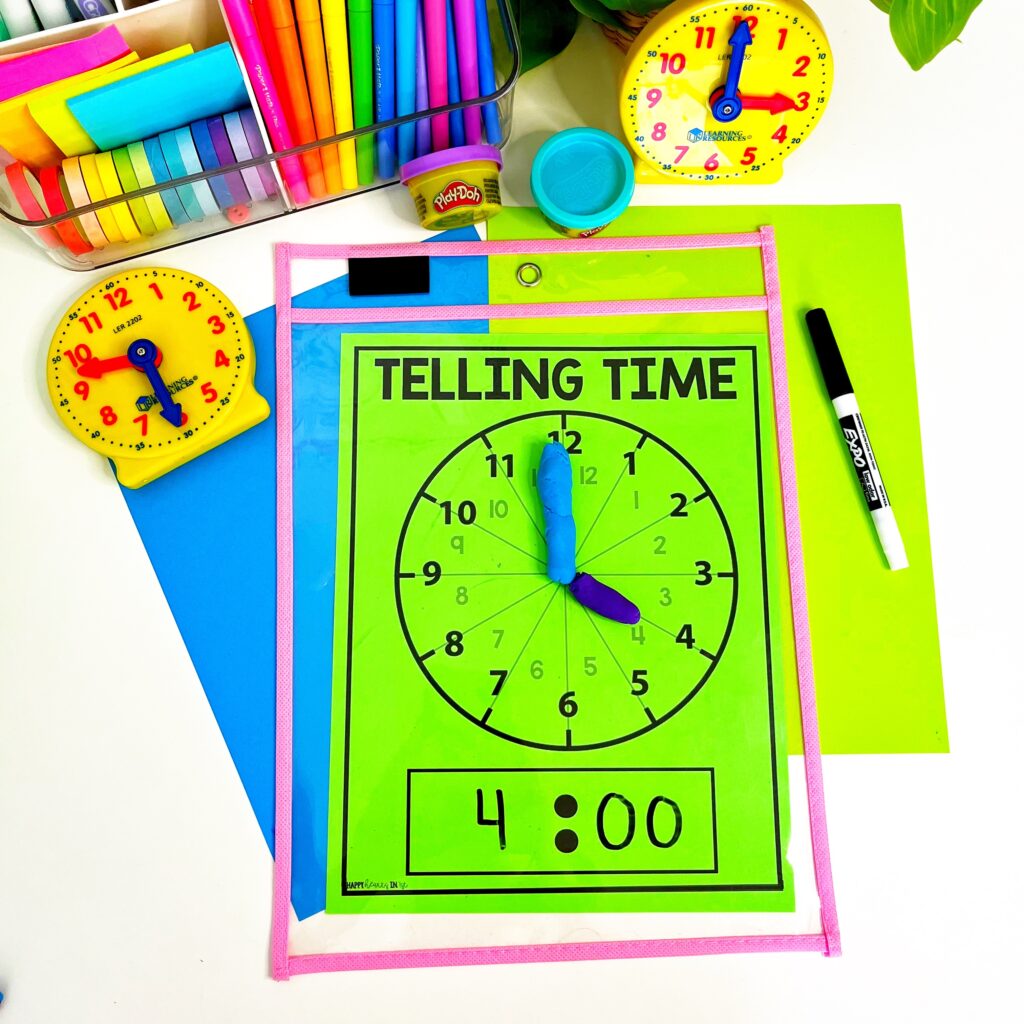
We also practice drawing times on the clock with dry erase marker.
Tip 5: Connect to Real Life
Telling time is exciting to young children! They love being able to look at the clock and know it is time to go to lunch or music! I frequently stop throughout the day and ask students to look at our classroom clock and figure out the time! I add clocks to our classroom schedule so students can see what time we do different activities.
Students also make their very own schedule book.
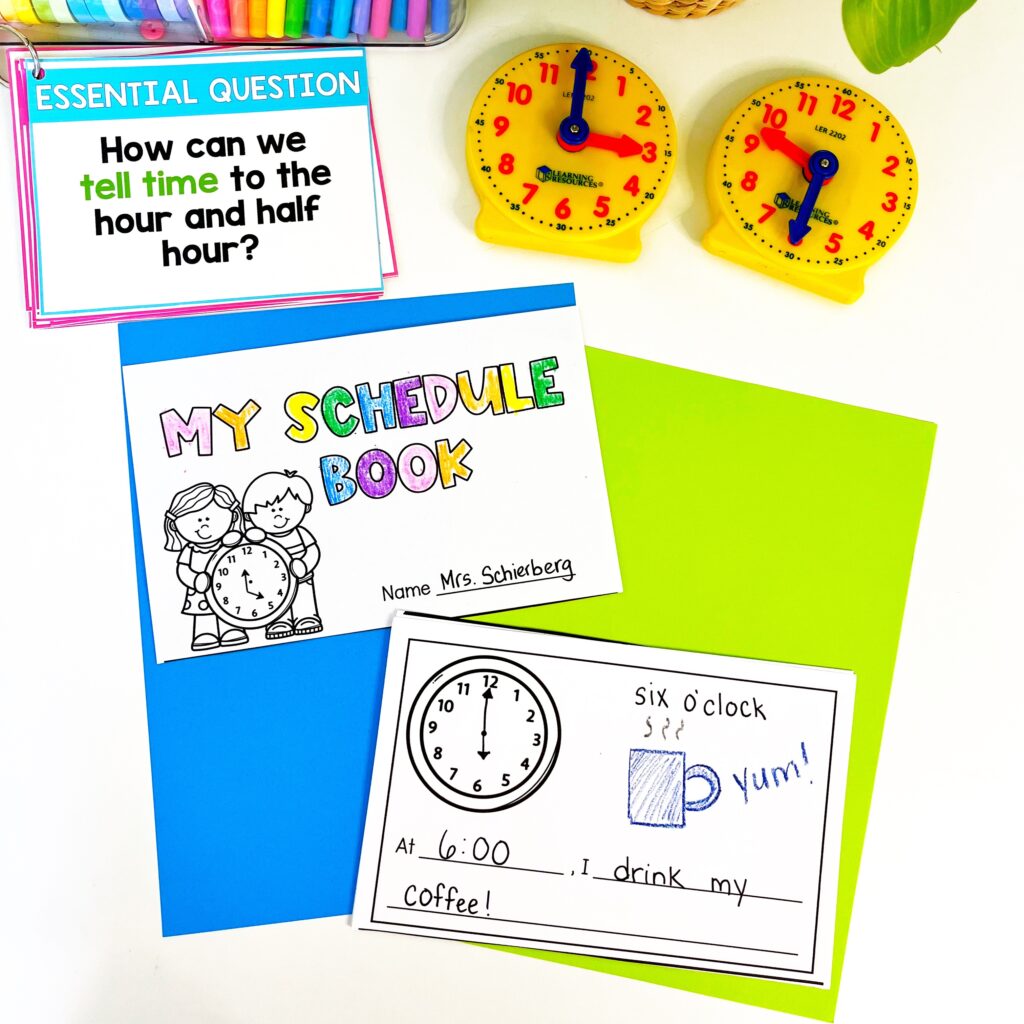
Students choose activities they do every day (wake up, eat breakfast, go to school, go to recess, go to bed, etc.) and create a page for each activity. They can draw the hands on the analog clock and write the digital time on the line.
Tip 6: Games and Practice
Practice makes perfect, and telling time is no exception. Consistent practice will help students develop their time-telling skills.
Here are a few of our favorite Telling Time Games!
- Do You Have the Time?
This a perfect activity to get students up and moving while also reviewing time to the hour!
Here’s How to Play:
- Give each student a watch wrist band to wear.
- Have students walk around the classroom and ask one another: Do you have time time?
- Students will then show their watch and the student will read the clock on their friend’s wrist.
- You can have students say the time out loud OR use the included recording sheet and write down the digital time.
- Continue circulating the room until students have had time to read all of the watches (or until you’re ready to stop!)

2. Time Bingo
Bingo is such a fun practice activity for telling time to the hour and half hour! I like playing in my small groups, but it could also be done as whole group review!

3. Telling Time Math Memory Match
Students can match the analog and digital time with this fun, memory-style game!
Find Telling Time Memory Match Here!
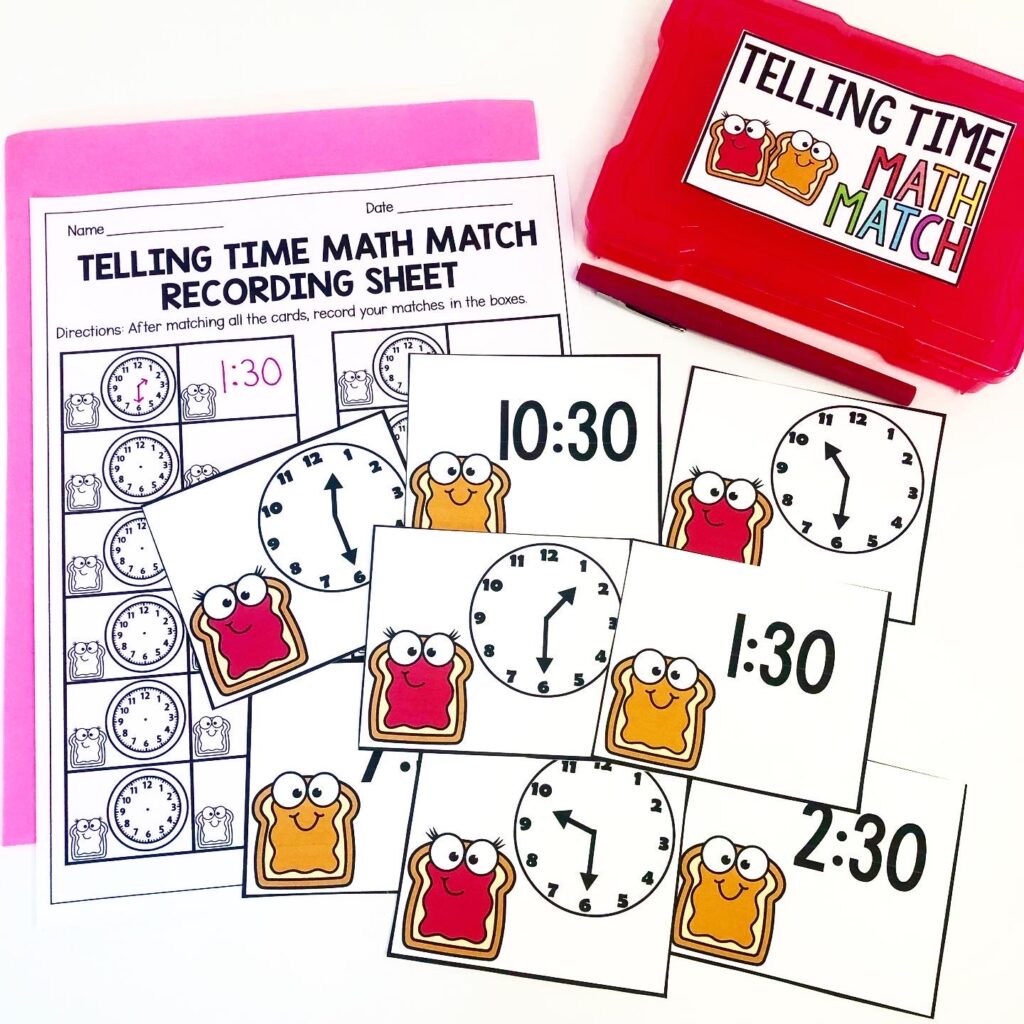
4. Time Solve the Room
Solve the Room is one of our favorite math centers in first grade! Each week I tape a new set of math task cards around the classroom. When students visit this center, they grab a clipboard and a recording sheet and walk around the classroom solving the math problems. After they finish, they visit the Grading Station and check their work! You can read more about our Guided Math Center routines in this blog post!
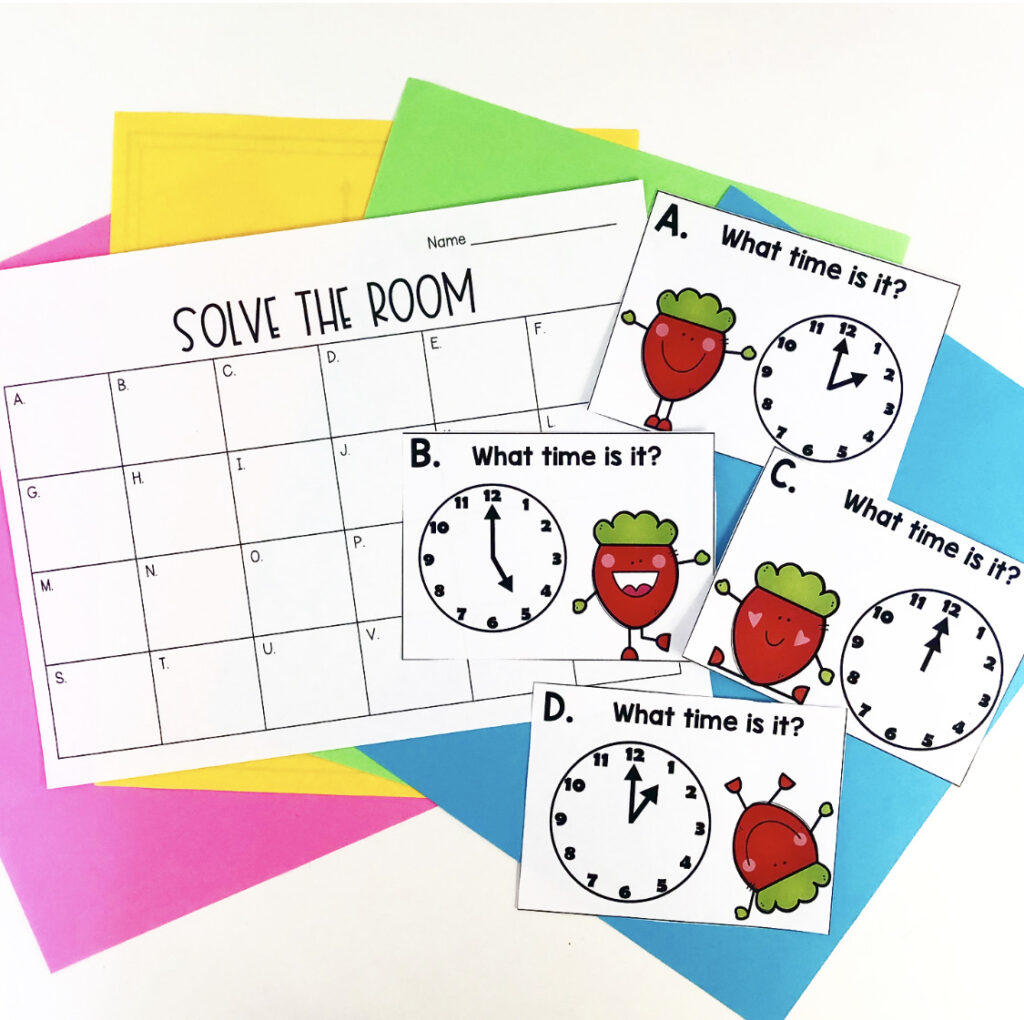
Telling Time Anchor Charts
Create a math reference wall to add to throughout your telling time unit!
I add these vocabulary posters and anchor charts to our math bulletin board as I teach the lessons.
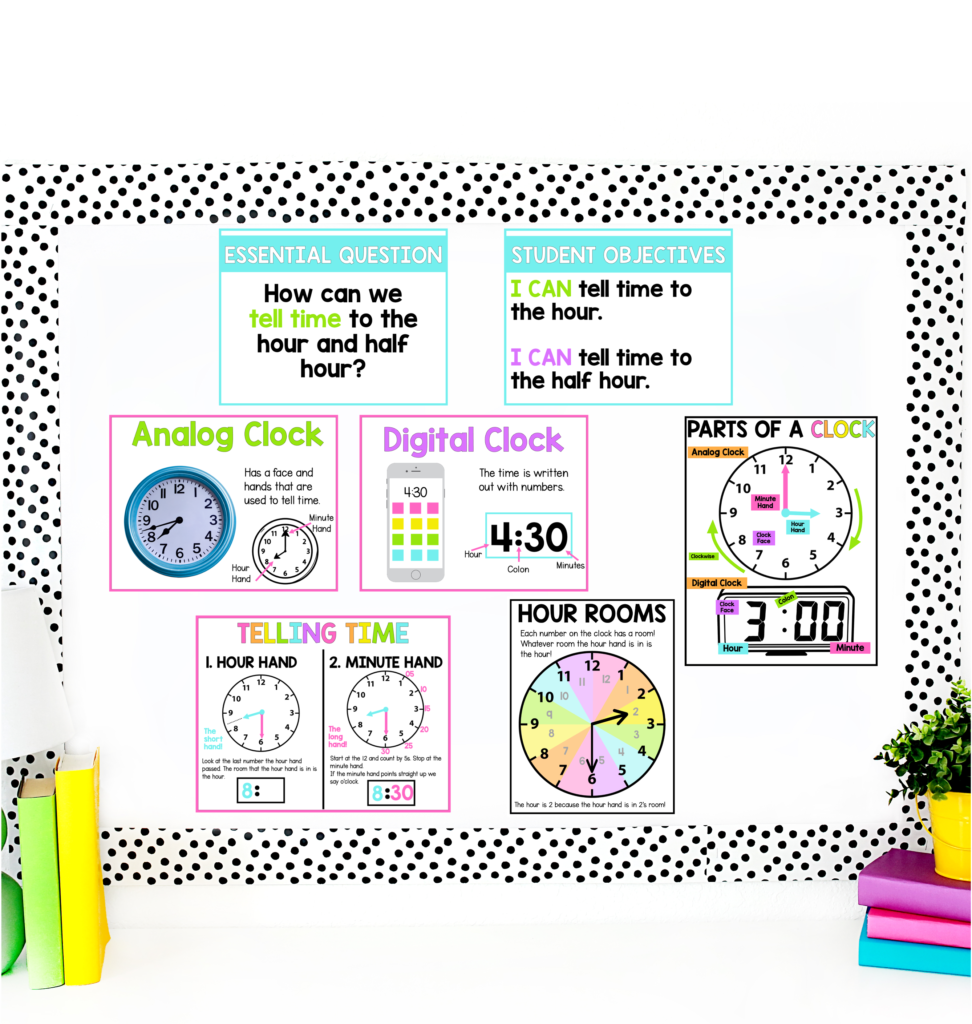
I also love using the included mini posters to make vocabulary rings for students to access during small group and math centers.
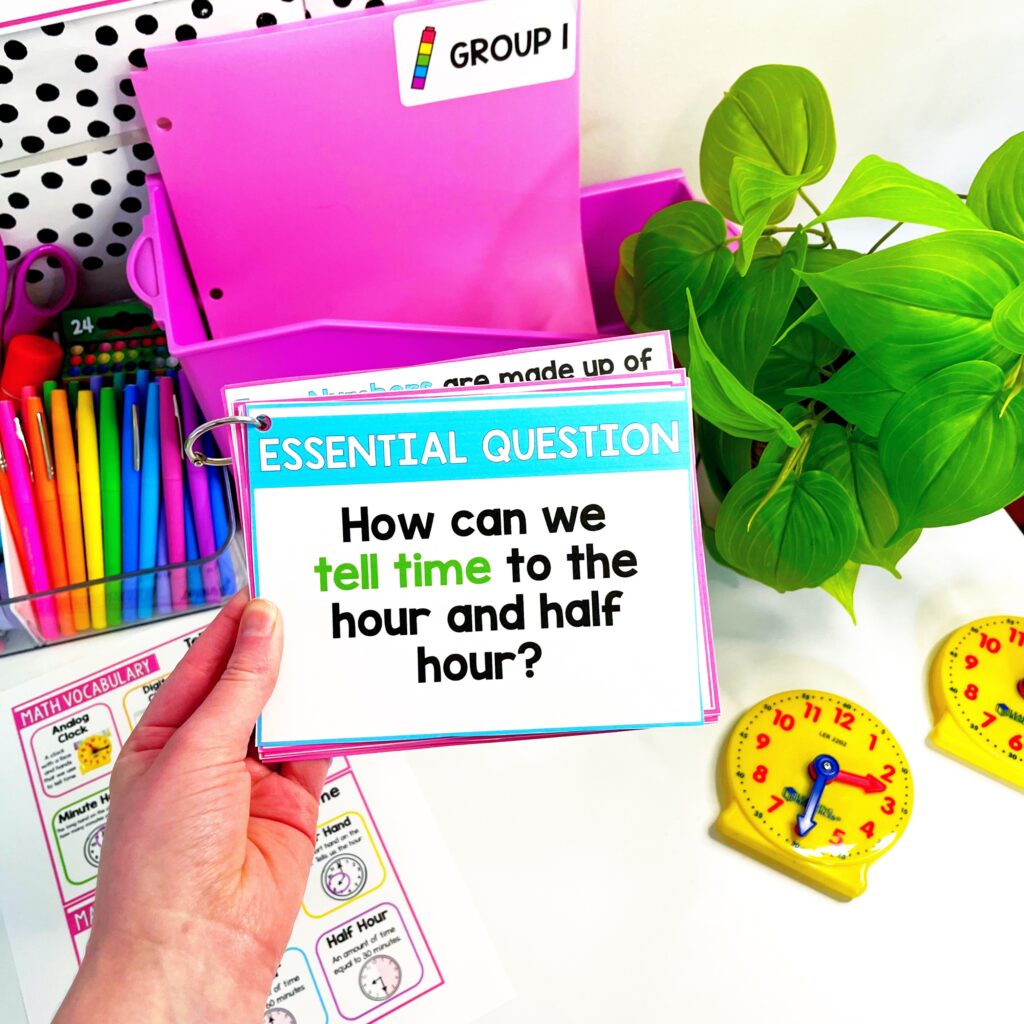
And I give each of my students the individual Telling Time Vocabulary Sheet to keep in their math folders for easy reference!

Telling Time Worksheets
For, more practice with telling time to the hour and half hour, students work independently on these no-prep pages! These are perfect for math centers, morning work, or to send home for extra practice!
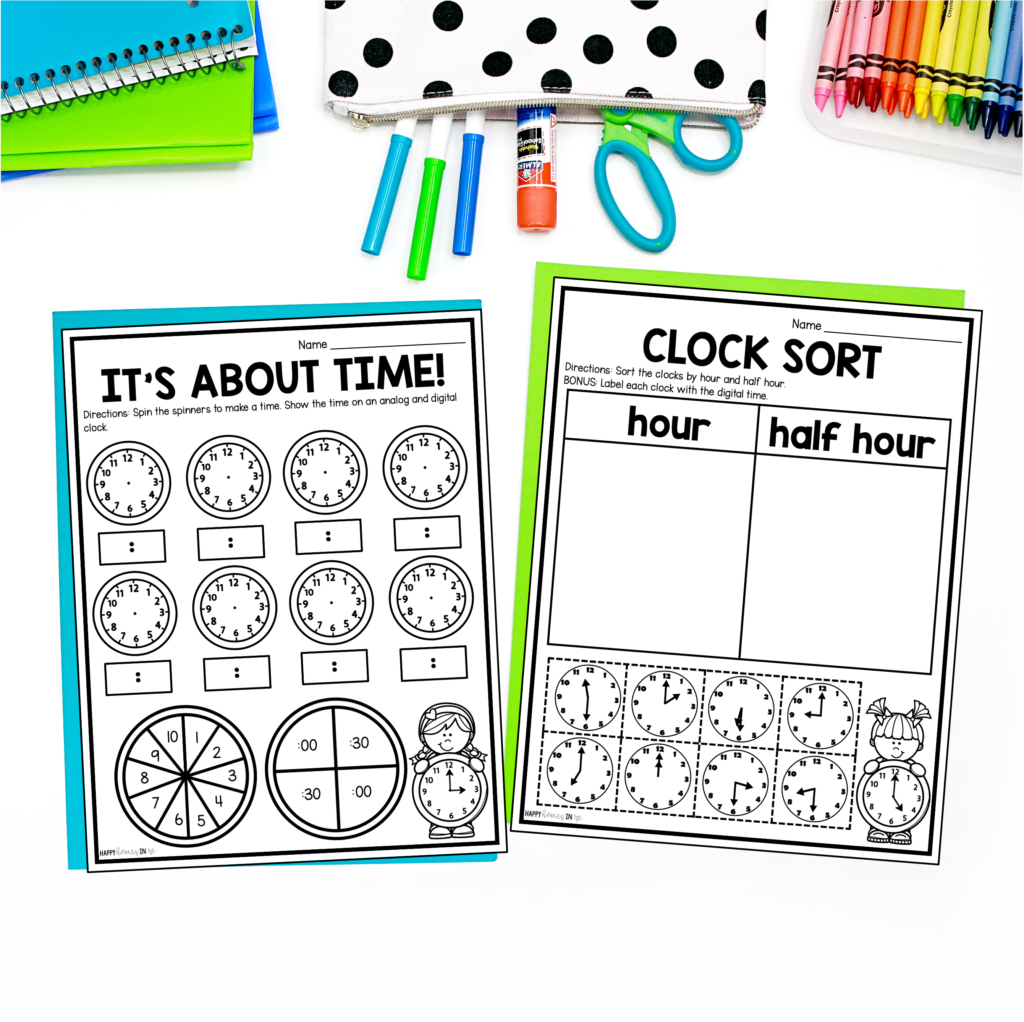
Assessment for Telling Time
In order to assess students throughout and at the end of our telling time unit, I like to use several strategies:
Small Group Observation: Guided Math Small groups gives the perfect opportunity to observe students. Observe your students as they engage in activities related to telling time. This will allow you to see how they are applying what they have learned, as well as any areas where they may be struggling.
Exit Slips: This is another great method for assessing students! At the end of your small group time, give an exit slip to each student to complete. Collect and use the data to guide the next days small group instruction.
Brain Check: At the end of our unit I give a summative assessment over our math standard.
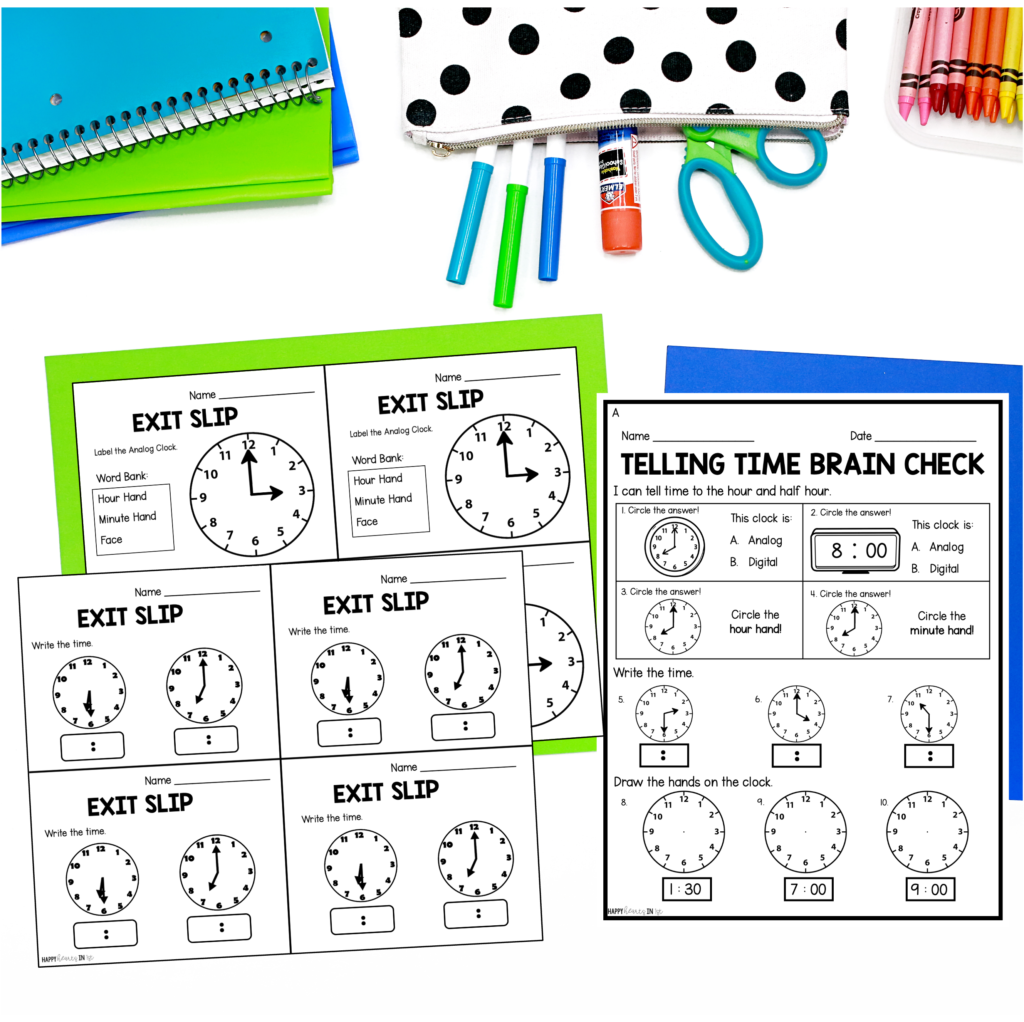
I hope this post gave you some ideas for your telling time unit! If you want your lessons planned for you, check out my Telling Time to the Hour and Half Hour Guided Math Unit! It includes:
⭐️ Ready-to-go Teaching Slides
⭐️ Hands-on Activities for Whole Group, Small Group, and Centers
⭐️ Telling Time Anchor Charts and Mini Posters
⭐️ Telling Time Worksheets and Printables
⭐️ Assessment


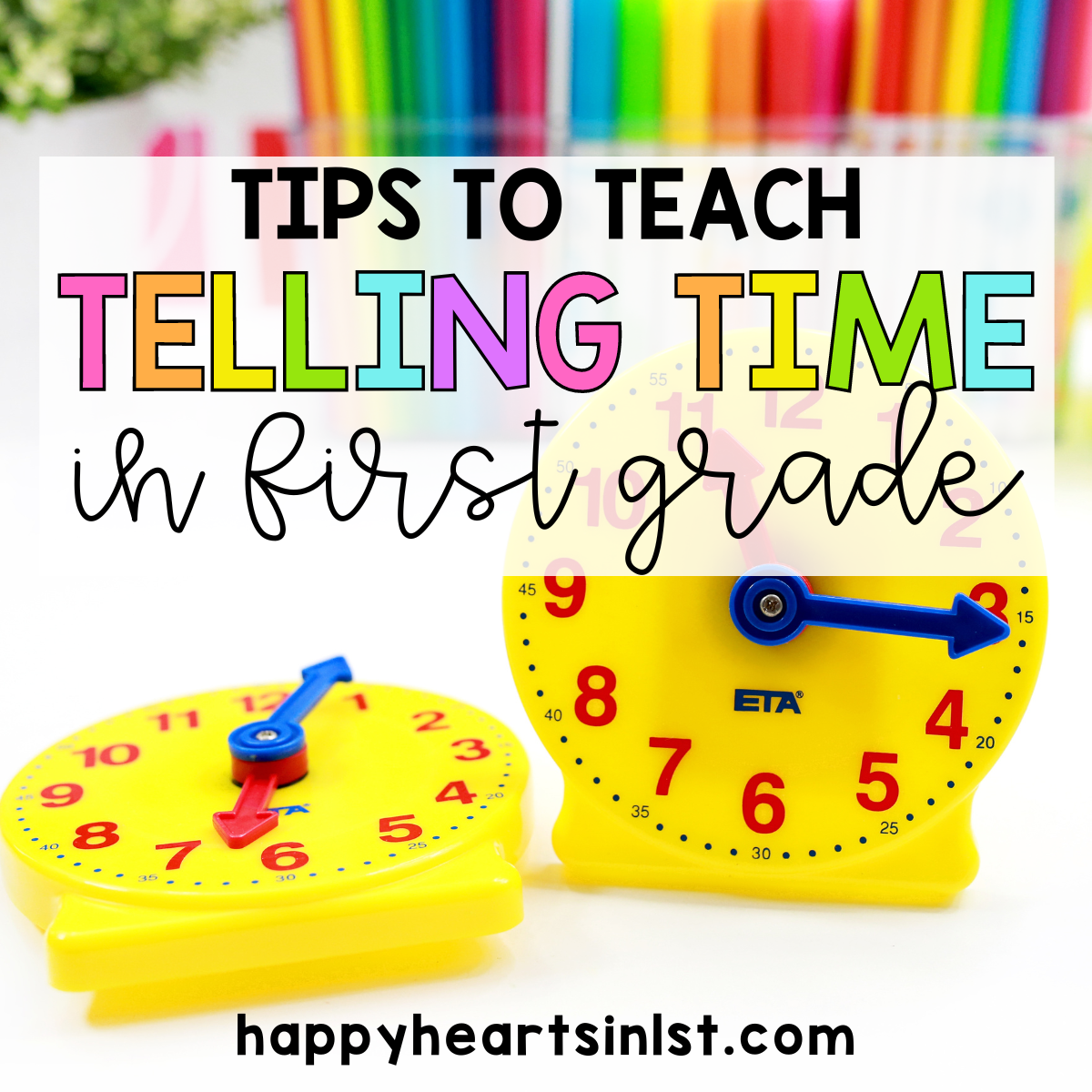
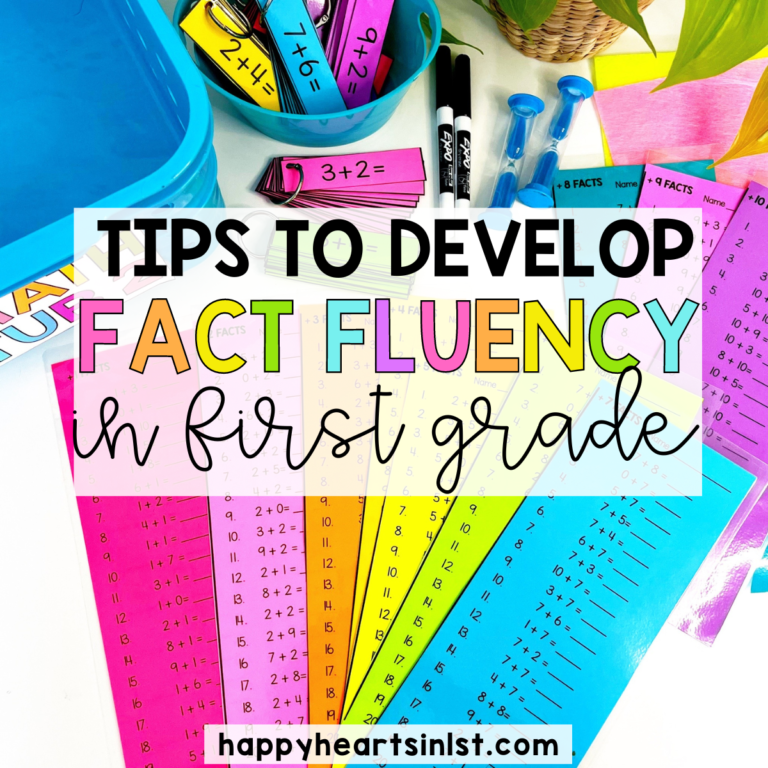
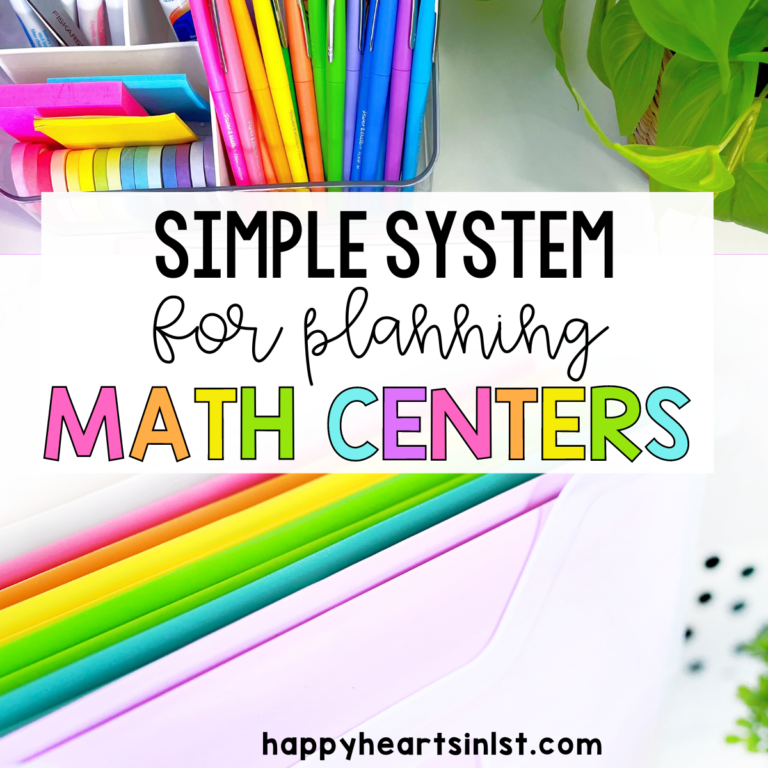
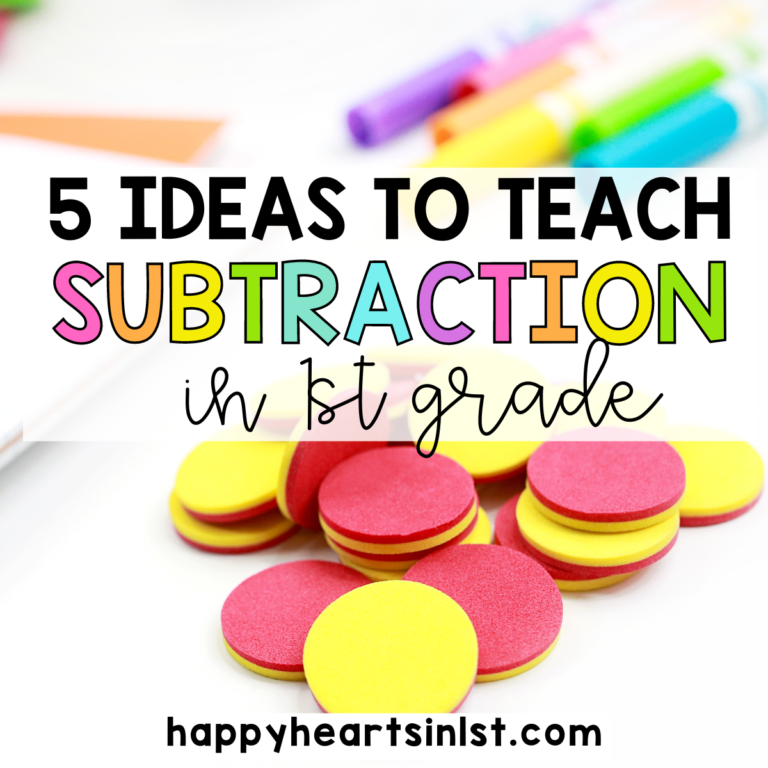
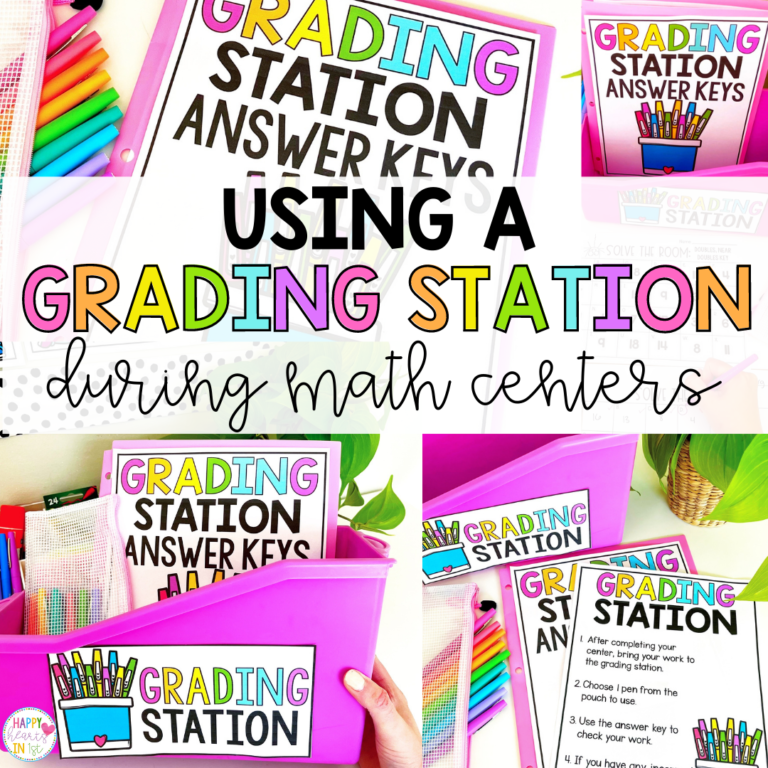
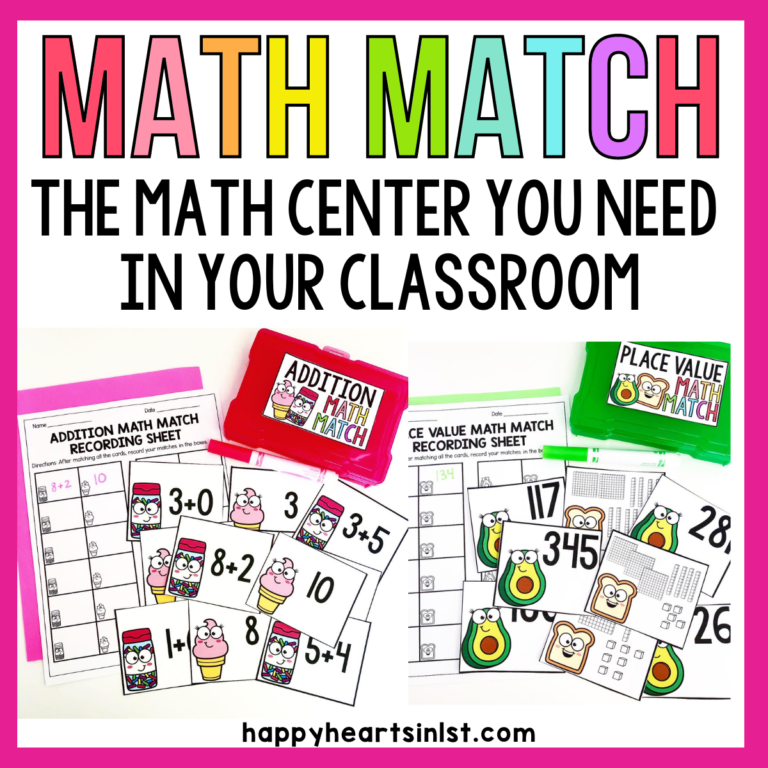


I love the watches activity!